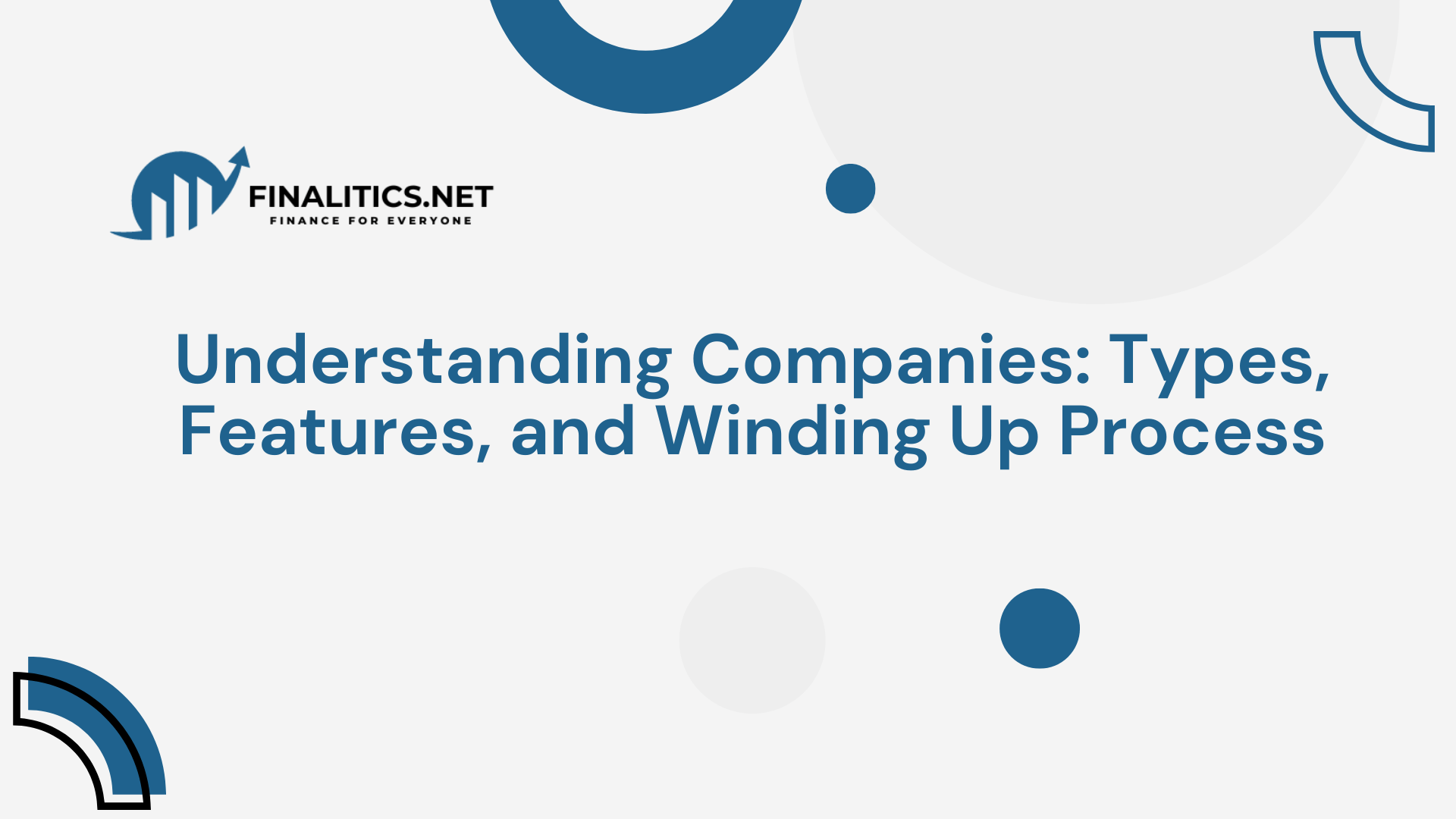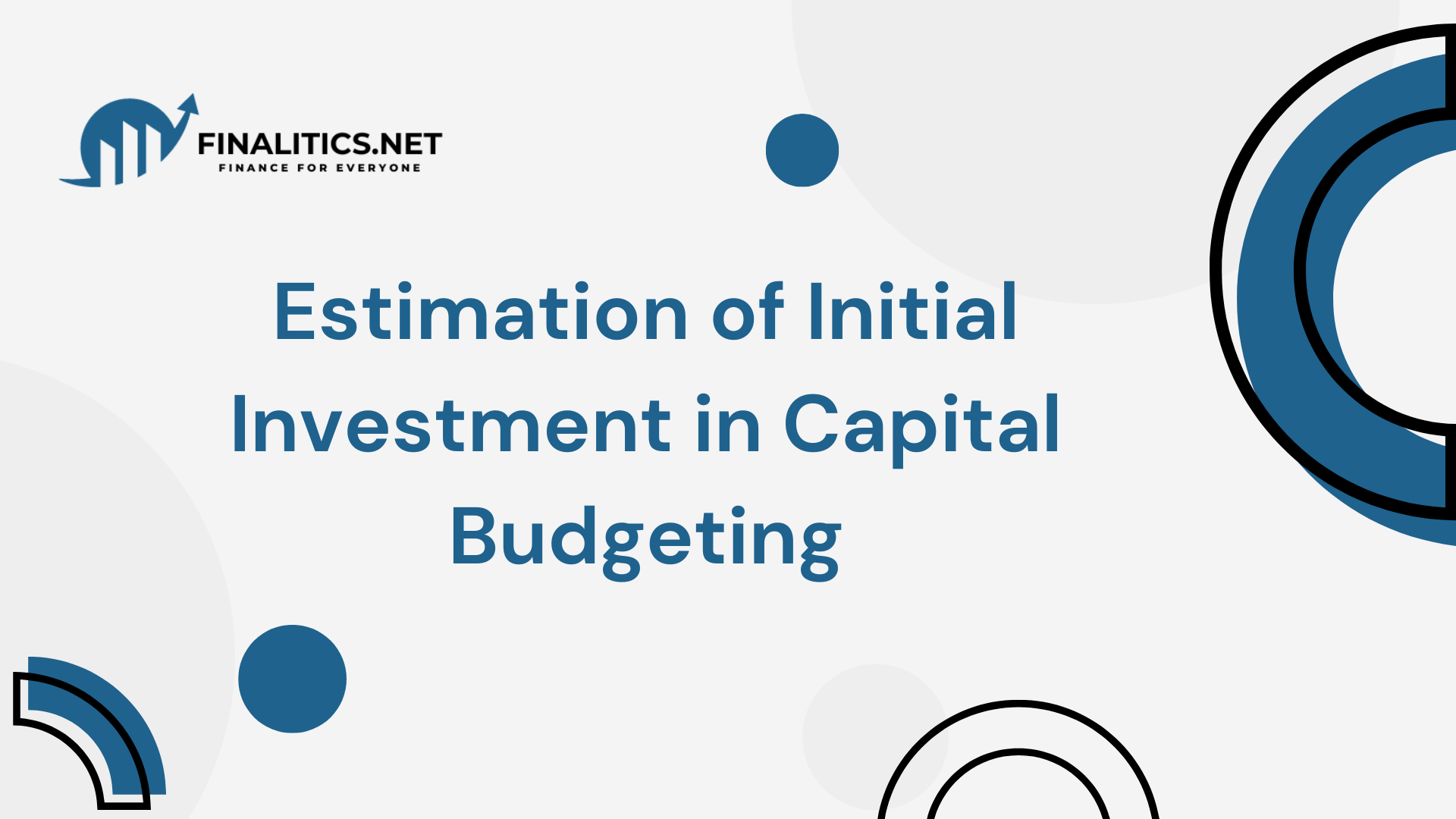In this article, we will delve into one of the primary forms of business organization: the company, also commonly referred to as a corporation. As distinct legal entities, companies offer unique advantages, such as limited liability, perpetual succession, and the ability to raise capital, which sets them apart from other business structures like sole proprietorships or partnerships.
Table of Contents
- What is a Company?
- What are The Key Features of a Company?
- Types of Companies
- The Process of Registration & Incorporation of a Company
- Promoters in Company
- Winding Up a Company: Closing a Company
- Reasons for Winding Up a Company
- Modes of Winding Up of a Company
- The Winding Up Procedure of a Company
- Final Thoughts
We will examine in detail the types of companies that exist, each designed to meet different business needs, regulatory requirements, and shareholder objectives. Additionally, we will explore the essential features that define a company, highlighting the benefits and obligations that come with incorporating a business entity.
In the business world, the concept of a “company” plays a vital role, in impacting economies, industries, and individuals globally. But what exactly is a company? How does it operate, and what happens when it is time to close or “wind up” a company? This article explores the meaning, types, features, and processes associated with companies, offering clarity on this essential business structure.
What is a Company?
A company is essentially a group of people coming together to carry out business activities. It is a voluntary association with a distinct name, created to perform commercial or industrial enterprises. The members of a company typically have “limited liability,” meaning their personal assets are generally protected if the company incurs debts.
Under the Companies Act of 1994, a company is treated as a single “legal person” with its own rights and responsibilities, separate from the individuals who make up the company. This concept of “legal personality” allows the company to continue existing even if members leave or pass away. In other words, a company is seen as an independent entity with a perpetual lifespan, legally capable of owning assets, entering contracts, and even suing or being sued.
For example, if Sarah and John form a company called “EcoGreen Pvt Ltd,” the company is legally recognized as a separate entity from Sarah and John. This means that any financial risks the company faces do not directly affect Sarah and John’s personal wealth beyond what they invested.
What are The Key Features of a Company?
The structure and operation of a company come with several unique features that differentiate it from other business forms like sole proprietorships or partnerships. Here are some fundamental features of a company:
1. Separate Legal Entity: A company is legally separate from its owners. It can own property, have debts, and face lawsuits independently.
2. Independent Corporate Entity: A company operates independently of its shareholders or members, which means the activities of the company do not affect the personal affairs of its owners.
3. Limited Liability: The liability of members is limited to the unpaid amount on their shares or the amount they have agreed to contribute. For instance, if a company goes into debt, shareholders are only liable for the amount they invested and not more.
4. Distinct Income: A company’s income is different from its members. While members receive dividends, the profits and revenues of the company are separate.
5. Perpetual Succession: The company continues to exist even if its owners change or pass away. This feature ensures stability and continuity in business operations.
6. Ability to Sue and Be Sued: Since a company is a legal entity, it can initiate lawsuits or be taken to court.
7. Rights and Liabilities: The rights and liabilities of a company are distinct from those of its members. This means the company has obligations that don’t necessarily apply to individual members and vice versa.
Types of Companies
Companies can be classified based on their structure, ownership, liability, and purpose. Here’s a breakdown of different types of companies:
1. Limited Company:
- Limited by Shares: Here, members are only liable for unpaid shares. If a member has purchased shares worth $10,000 and has paid $5,000, they are only liable for the remaining $5,000.
- Limited by Guarantee Without Share Capital: Members agree to contribute a certain amount in case of winding up. This type is common in non-profit organizations.
- Limited by Guarantee With Share Capital: Similar to the above but includes share capital; members have obligations based on their guarantee amount and unpaid shares.
2. Unlimited Company: In these companies, members face unlimited liability. If the company incurs debt, members are responsible for covering the entire amount. Such companies are rare due to the high risk for members.
3. Government Company: When the government holds at least 51% of a company’s shares, it is classified as a government company. These companies often provide essential services and may include entities like public utilities.
4. Foreign Company: A company incorporated outside of India but conducting business within India. If an international brand opens an office or branch in India, it is considered a foreign company.
5. Private Company: A company that restricts its membership to a small group and does not invite the public to invest. Private companies have fewer regulatory obligations, which allows for more flexibility in operations. For example, a small tech startup might register as a private company to avoid public scrutiny.
6. Public Company: A public company is one that has higher paid-up capital and offers shares to the public. Such companies are subject to rigorous regulations and are often listed on stock exchanges, allowing anyone to buy shares.
The Process of Registration & Incorporation of a Company
The formation of a company requires a legal process known as registration or incorporation. According to the Companies Act, of 1956, any group with more than 20 members (or 10 in banking) must register to form a company. If they don’t, the association is deemed illegal, and contracts made by it cannot be enforced.
The registration certificate serves as official proof that the company has met all legal requirements to operate. This process ensures that the company is recognized as a legal entity, which safeguards its existence and operations under the law.
Difference between registration and incorporation
Registration is the initial step in the process of forming a company. It involves submitting necessary documents to the relevant authority (such as the Registrar of Companies) to establish the company’s legal existence. Registration ensures that the company’s name, type, purpose, and ownership structure are officially recorded.
Whereas, Incorporation goes a step further than registration. Incorporation is the legal process through which a registered entity becomes a distinct legal “person” in the eyes of the law, separate from its owners. Once incorporated, the company gains a unique legal identity, meaning it can enter into contracts, own property, sue, and be sued in its name.
Mainly, this is the basic difference between registration and incorporation.
Promoters in Company
Promoters of a company are the people who initiate the creation of a company. They take on the responsibility of organizing and setting up the business structure. Promoters are not legally the agents or trustees of the company but hold a fiduciary position. They may enter into pre-incorporation contracts to secure necessary resources or agreements, which are later validated after the company’s incorporation.
For instance, if John promotes a company focused on sustainable farming, he might enter into contracts for acquiring land or equipment even before the company is officially incorporated.
Winding Up a Company: Closing a Company
Winding up a company is the process of closing a company. When a company is wound up, its assets are sold off, debts are settled, and any remaining funds are distributed among the members. This process is administered to ensure that creditors and shareholders receive what they are due.
A liquidator, often appointed by the court, takes control during winding up, managing the distribution of assets and settling liabilities. The winding-up process applies even to companies that are profitable if there’s a reason to dissolve them.
Reasons for Winding Up a Company
Several situations can lead to winding up a company:
- Passing a special resolution by the company’s members: Members of a company may decide through a special resolution to voluntarily wind up the company. This often happens when the company has fulfilled its purpose, or the members agree it’s no longer viable to continue operations.
- Failing to hold statutory meetings: companies are legally required to hold certain meetings, such as Annual General Meetings (AGMs), to maintain compliance and transparency. Failure to conduct these meetings can lead to regulatory actions, including winding up, as it indicates a lack of corporate governance.
- Failure to commence business operations: If a company does not begin its operations within a specified timeframe after incorporation, it may be wound up. This is usually done to prevent inactive or shell companies from cluttering the registry and to ensure that registered entities are actively operating.
- Falling below the minimum membership requirement: Certain types of companies, such as public companies, are required to maintain a minimum number of members. If the membership falls below this number for a prolonged period, the company may be forced to wind up.
- Inability to pay debts: If a company is unable to meet its financial obligations or pay its creditors, it may be deemed insolvent. In such cases, creditors or the company itself may seek a winding-up order to liquidate assets and settle outstanding debts.
Modes of Winding Up of a Company
1. Compulsory Winding Up: Compulsory winding up of a company occurs under court supervision. A court can order a winding up for various reasons, such as deadlock in management or loss of substratum, which means the company can no longer carry out its purpose.
2. Voluntary Winding Up: Voluntary winding up of a company can be initiated by the company’s members or creditors without involving the court. Members’ voluntary winding up is chosen when the company is solvent, while creditors’ voluntary winding up occurs when it’s insolvent.
The Winding Up Procedure of a Company
The process of winding up a company follows a legal procedure:
1. Filing a Petition: The winding-up process begins when a concerned party, such as a creditor, shareholder, or company director, files a petition with the court requesting the company’s dissolution. This petition outlines the reasons for seeking a winding-up order, such as insolvency or failure to comply with regulations.
2. Appointment of Liquidator: Once the court approves the winding-up petition, a liquidator is appointed. The liquidator’s role is to manage the company’s assets, settle debts, and oversee the fair distribution of remaining funds to creditors and shareholders.
3. Court’s Decision: After reviewing the petition, the court decides whether to proceed with winding up. The court may either dismiss the petition if the grounds are insufficient or approve the winding-up order, officially initiating the liquidation and asset distribution process.
Final Thoughts
Companies play a significant role in modern economies, providing goods, services, and employment. Understanding how companies operate, the types that exist, and how they can be closed offers valuable insights into the business world. Whether a private tech startup, a public manufacturing firm, or a government utility, each type of company serves a unique purpose with specific rules and regulations.
By understanding the structure, responsibilities, and liabilities associated with different types of companies, individuals can make informed decisions about investments, partnerships, and career paths. Additionally, learning about the winding-up process highlights the importance of compliance and financial planning, ensuring that businesses can manage their obligations and exit gracefully if needed.



